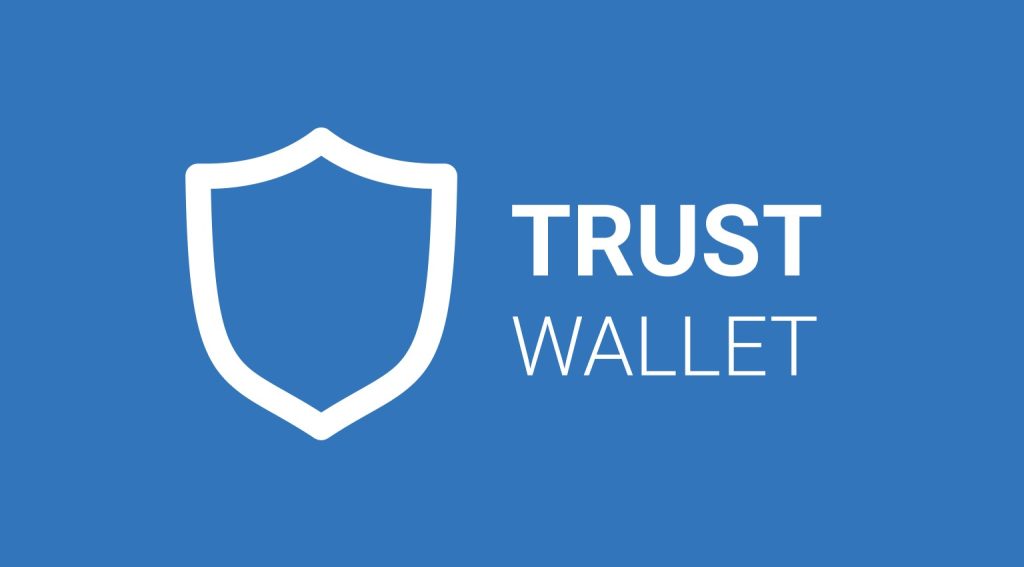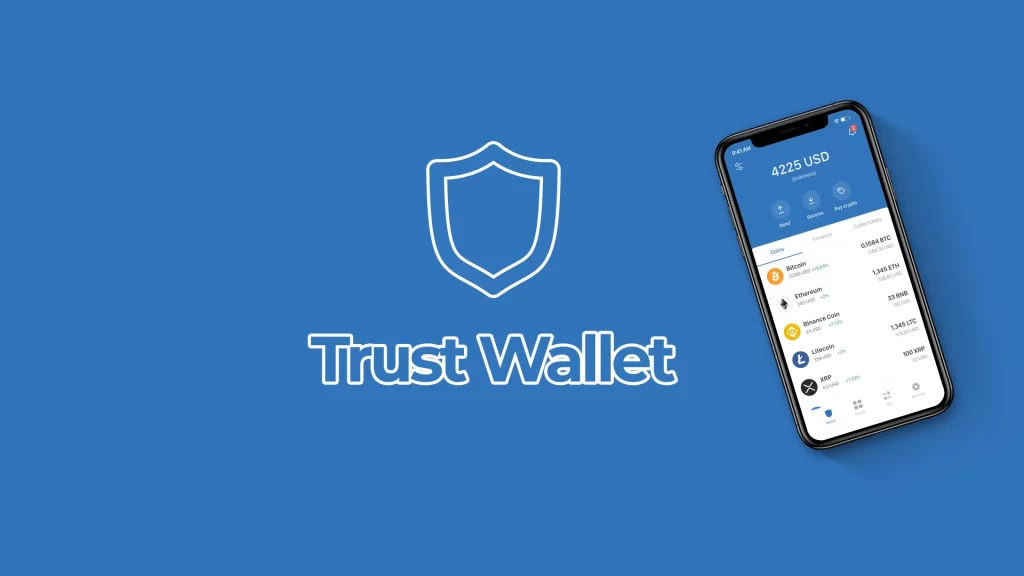Your Trust Wallet address is a unique identifier used for receiving cryptocurrencies within the Trust Wallet app.
Finding Your Wallet Address
How to Locate Your Trust Wallet Address
Locating your Trust Wallet address is a straightforward process. Your wallet address is essential for receiving cryptocurrency transactions. Follow these steps to find it:
- Open Trust Wallet: Launch the Trust Wallet app on your mobile device.
- Select the Cryptocurrency: Choose the specific cryptocurrency for which you need the wallet address. Each cryptocurrency has a unique address.
- Tap on Receive: Click the “Receive” button. This will display your wallet address and a QR code for easy scanning.
Steps to Copy Your Trust Wallet Address
Copying your wallet address correctly is crucial to ensure you receive funds without errors. Here’s how you can do it:
- Display the Address: Once you have navigated to the “Receive” section for your chosen cryptocurrency, your wallet address will be displayed.
- Copy the Address: Click on the “Copy” button located next to the address. This ensures the entire address is copied accurately without any mistakes.
- Verify the Address: Double-check the copied address by pasting it into a secure note or another app to confirm it matches the displayed address.
Common Uses for Your Wallet Address
Your Trust Wallet address is used for a variety of purposes. Understanding these can help you manage your cryptocurrency transactions more effectively:
- Receiving Funds: Provide your wallet address to others to receive cryptocurrency payments or transfers.
- Depositing from Exchanges: Use your wallet address to transfer funds from cryptocurrency exchanges to your Trust Wallet.
- Participating in Airdrops: Register your wallet address for cryptocurrency airdrops to receive free tokens.
- Staking: Provide your wallet address to stake certain cryptocurrencies and earn rewards.
- Online Payments: Use your wallet address to make online purchases or donations where cryptocurrencies are accepted.
- Investing in ICOs: If you’re participating in Initial Coin Offerings (ICOs), you’ll need to provide your wallet address to receive new tokens.

Understanding Wallet Addresses
What is a Cryptocurrency Wallet Address
A cryptocurrency wallet address is a unique string of alphanumeric characters that serves as a destination for receiving digital assets. Each address is associated with a specific wallet and cryptocurrency. Wallet addresses can be compared to bank account numbers but are used exclusively within the cryptocurrency ecosystem.
- Unique Identifier: Each address is unique to the wallet and the type of cryptocurrency it is associated with.
- Public Information: Wallet addresses can be shared publicly to receive funds.
- QR Code: Many wallets provide a QR code representation of the address for easy scanning and transactions.
Difference Between Wallet Address and Private Key
Understanding the distinction between a wallet address and a private key is crucial for the security and functionality of your cryptocurrency transactions:
- Wallet Address:
- Public: Can be shared with others to receive cryptocurrency.
- Identifier: Acts as the public identifier of your wallet for receiving funds.
- Private Key:
- Confidential: Must be kept secret and secure; it should never be shared with anyone.
- Access Control: Grants access to the cryptocurrency held in the wallet and is used to authorize transactions.
- Security: Losing your private key means losing access to your funds.
- Analogy: Think of your wallet address as your bank account number and your private key as the PIN or password needed to access and manage your account.
Importance of Keeping Your Wallet Address Secure
While wallet addresses are meant to be shared publicly to receive funds, it is still important to ensure they are used securely:
- Avoid Phishing Scams: Be cautious when sharing your wallet address. Always ensure you are communicating with legitimate entities.
- Double-Check Addresses: Always double-check wallet addresses before sending or receiving funds to prevent misdirected transactions.
- Use Secure Channels: Share your wallet address through secure and trusted communication channels to avoid interception by malicious actors.
- Monitor for Anomalies: Regularly monitor your wallet for any unauthorized transactions or activities.
Using Your Wallet Address
How to Receive Cryptocurrency with Your Wallet Address
Receiving cryptocurrency with your wallet address is a fundamental process in managing digital assets. Here’s how you can do it:
- Access Your Wallet: Open your cryptocurrency wallet application (e.g., Trust Wallet).
- Navigate to Receive: Find and select the “Receive” option within the wallet.
- Choose Cryptocurrency: Specify the cryptocurrency you wish to receive. Each cryptocurrency has a unique wallet address.
- Copy Your Address: Copy your wallet address or display the QR code associated with it.
- Provide Address: Share your wallet address or QR code with the sender to initiate the transaction.
- Verify Receipt: After the transaction, monitor your wallet for incoming funds. Confirm the receipt of cryptocurrency in your wallet.
Sharing Your Wallet Address Safely
To ensure the security of your transactions and digital assets, follow these guidelines when sharing your wallet address:
- Direct Communication: Share your wallet address through secure and direct communication channels, such as encrypted messages or trusted platforms.
- Verify Recipient: Before sharing, verify the recipient’s identity to prevent sending to the wrong address.
- QR Codes: Use QR codes for in-person transactions to minimize errors and enhance convenience.
- Avoid Public Sharing: Avoid sharing your wallet address in public forums or unsecured websites to prevent unauthorized access or phishing attempts.
Avoiding Common Mistakes When Using Wallet Addresses
To prevent potential errors and ensure smooth transactions, be mindful of these common mistakes:
- Incorrect Address: Always double-check the recipient’s wallet address before sending funds to avoid irreversible transactions.
- Scanning QR Codes: Ensure QR codes are scanned correctly to avoid misdirected transactions.
- Phishing Scams: Beware of phishing attempts where malicious actors pose as legitimate entities to obtain your wallet address or private information.
- Lost Access: Safeguard your private key to prevent losing access to your wallet and funds.

Wallet Address Formats
Different Formats for Wallet Addresses
Cryptocurrency wallet addresses can vary in format depending on the blockchain network and cryptocurrency. Here are common formats:
- Bitcoin (BTC): Addresses start with “1” or “3” and consist of 26-35 alphanumeric characters.
- Ethereum (ETH): Uses hexadecimal characters and begins with “0x”, followed by 40 characters.
- Ripple (XRP): Contains a combination of letters and numbers, beginning with an “r” or “X”, with 25-35 characters.
- Litecoin (LTC): Starts with “L” or “M”, with 26-35 alphanumeric characters.
- Bitcoin Cash (BCH): Similar to Bitcoin but with a different prefix, starting with “q”, “p”, or “bitcoincash”.
Identifying the Correct Address Format for Each Cryptocurrency
To ensure successful transactions, always use the correct format for your cryptocurrency:
- Check Wallet Provider: Use the wallet provider’s guidelines or documentation to identify the correct format.
- Network Compatibility: Verify if the address format is compatible with the recipient’s network.
- Validation Tools: Online tools or wallet apps often validate addresses before transactions.
How to Verify Your Wallet Address
Verifying your wallet address is crucial to avoid errors and ensure transaction accuracy:
- Cross-Check: Compare the copied address with the one displayed on your wallet or transaction details.
- Use Blockchain Explorers: Use blockchain explorers specific to each cryptocurrency to verify addresses.
- Double-Check: Verify the first and last characters of the address to detect any potential typos.

Troubleshooting Wallet Address Issues
What to Do If You Can’t Find Your Wallet Address
If you’re unable to locate your wallet address, follow these steps to retrieve it:
- Access Your Wallet: Log into your cryptocurrency wallet application (e.g., Trust Wallet).
- Navigate to Receive: Look for the “Receive” or “Deposit” option within the wallet menu.
- Copy Address: Select the cryptocurrency you need the address for and copy the displayed wallet address.
- Check Previous Transactions: Review past transactions where you sent cryptocurrency to confirm the address used.
Common Problems and Solutions
Encounter issues with your wallet address? Here are common problems and their solutions:
- Incorrect Address: Double-check the address for any typos or formatting errors. Ensure it matches the intended recipient’s address.
- Lost Address: If you’ve misplaced your address, retrieve it from your wallet app under the “Receive” section.
- Technical Glitches: Restart your wallet app or update to the latest version to resolve technical glitches affecting address display.
How to Contact Support for Address Issues
When all else fails, reach out to customer support for assistance:
- Email Support: Send an email detailing your issue with screenshots if possible.
- Live Chat: Use the live chat feature if available on the wallet provider’s website or app.
- Community Forums: Seek help from cryptocurrency community forums where users may provide insights or solutions.

Security Tips for Wallet Addresses
Protecting Your Wallet Address from Phishing
To safeguard your wallet address from phishing attacks, follow these tips:
- Direct Communication: Share your wallet address only through secure channels, avoiding public forums or unencrypted messages.
- Verify Sources: Double-check the authenticity of messages requesting your address to prevent disclosing it to malicious actors.
- Enable 2FA: Utilize two-factor authentication (2FA) on your wallet app to add an extra layer of security.
Using QR Codes Safely
QR codes provide convenience but require careful handling for security:
- Scan Carefully: Ensure QR codes are from trusted sources and haven’t been tampered with.
- Check Address: Verify the displayed wallet address matches your intended recipient’s details before proceeding with transactions.
Why You Should Avoid Sharing Your Address Publicly
Keep your wallet address private to minimize risks:
- Avoid Phishing: Publicly shared addresses can attract phishing attempts, leading to potential theft or unauthorized transactions.
- Privacy Concerns: Prevent tracking of your financial activities by limiting exposure of your wallet address.
- Security Precautions: Only share your wallet address with trusted parties when necessary for transactions.

Advanced Features
Generating Multiple Wallet Addresses
Learn how to create multiple wallet addresses for enhanced security and organization:
- Access Your Wallet: Open your Trust Wallet application.
- Navigate to Settings: Look for the “Settings” or “Manage Wallet” option.
- Create New Address: Find the “Generate New Address” or “Add Wallet” button.
- Backup: Always back up each new address securely to restore access if needed.
Using Wallet Address for Staking and DeFi
Utilize your wallet address for staking and decentralized finance (DeFi) activities:
- Select Staking Platform: Choose a DeFi platform that supports staking for your cryptocurrency.
- Link Your Wallet: Connect your Trust Wallet address to the staking platform using the provided integration or address link.
- Follow Guidelines: Follow platform-specific instructions to stake your assets securely.
How to Manage Multiple Wallet Addresses in Trust Wallet
Efficiently manage multiple wallet addresses within Trust Wallet:
- Switch Between Addresses: Navigate between different addresses within the Trust Wallet app interface.
- Label Addresses: Use the labeling feature to distinguish between addresses used for different purposes.
- Backup and Security: Securely store and backup each wallet address to ensure access and protection against loss.
